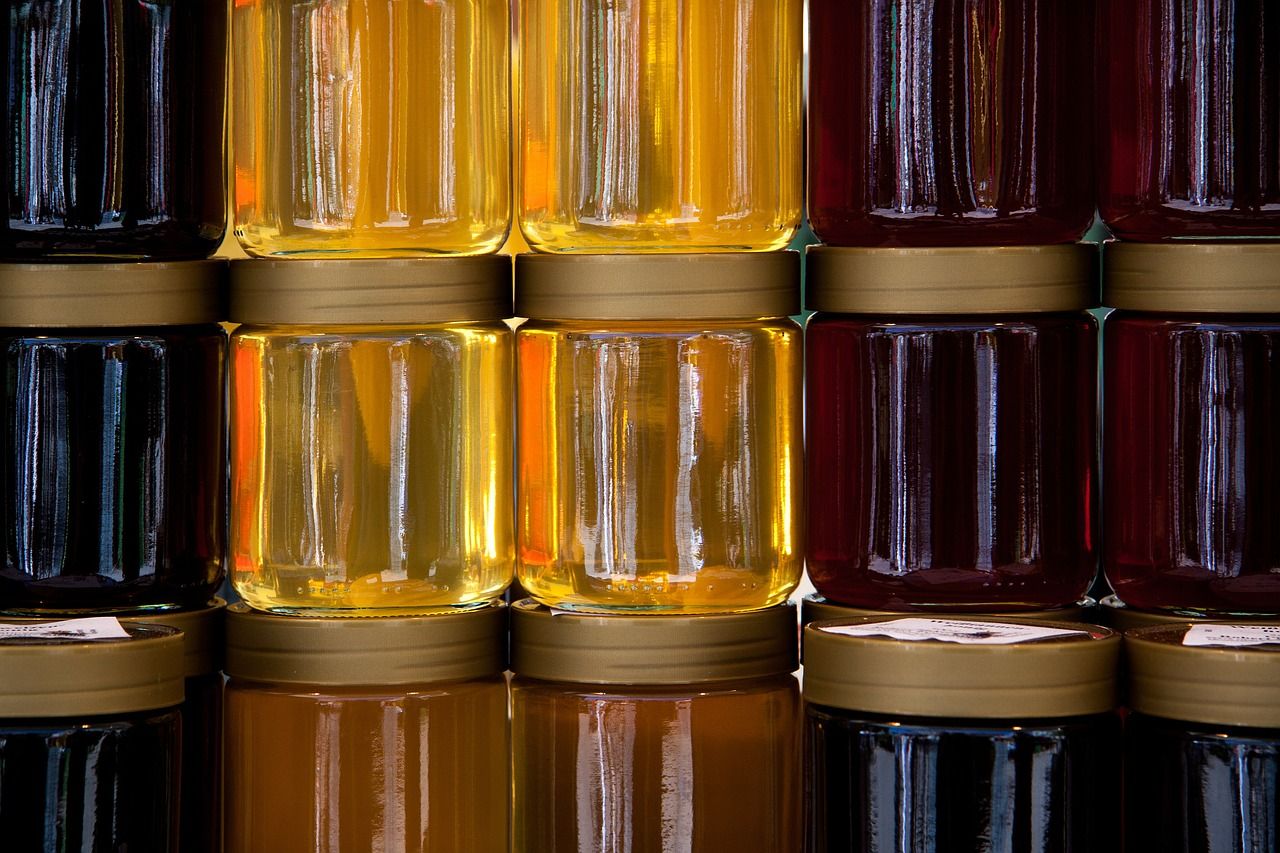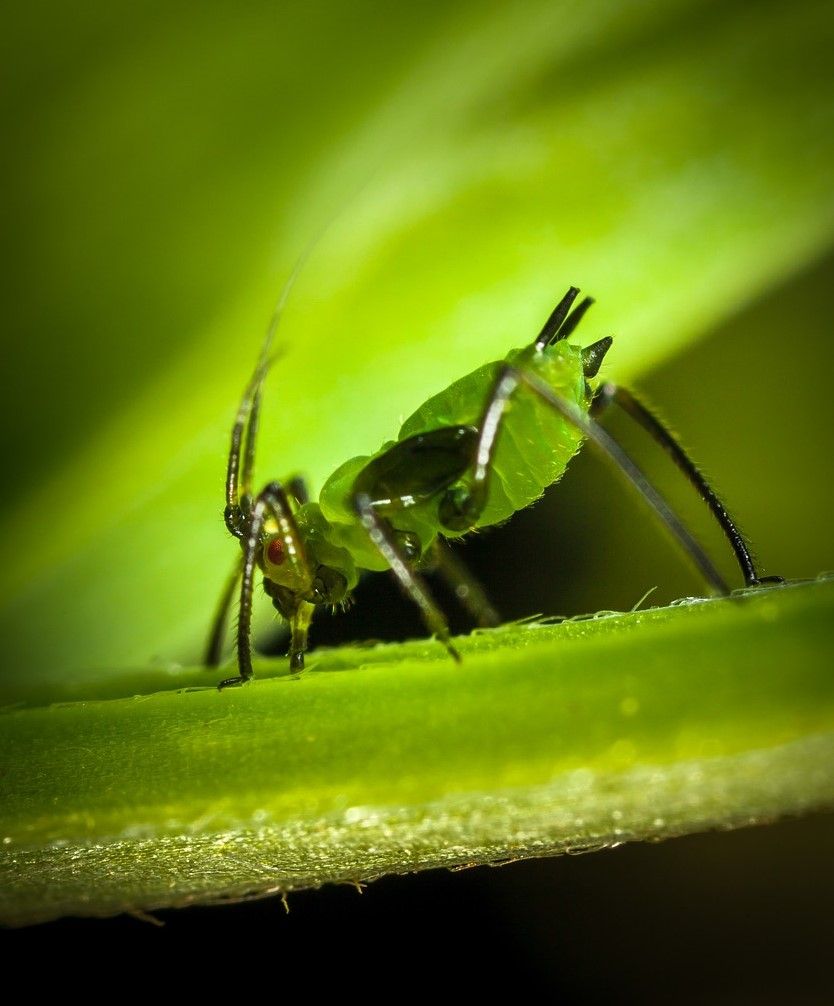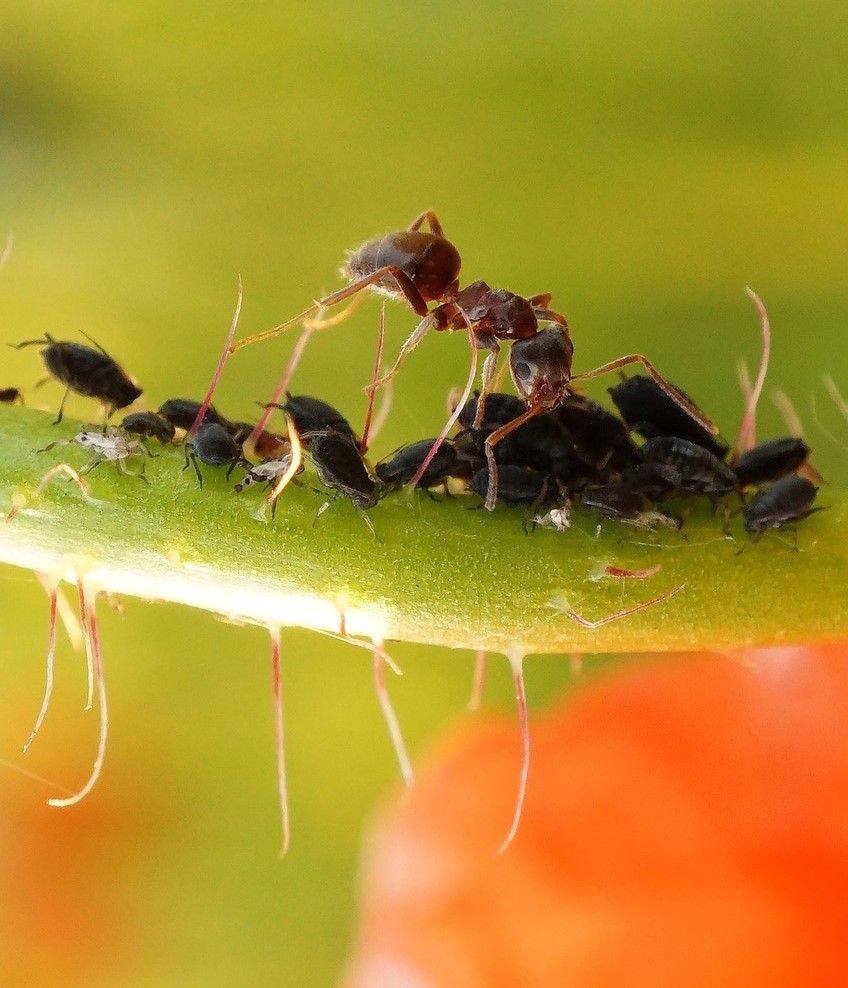Not all honey comes from flowers. Sounds weird right? Instead of collecting nectar, bees sometimes collect «honeydew», these sugary droplets are basically aphids excrement’s, luckily it taste way better then it sounds! Honeydew honey, also called forest honey has a strong flavour and is believed to be very healthy. So what is this type of honey exactly and how is it produced?
Honey without nectar?
Usually bees visit various flowers and collect nectar to create honey. Most of the honey you will find in your local supermarket is a blend of the blossom of various plants (blossom honey). However, there aren’t always flowers available. This can be due to the location of the beehive or because of a so-called nectar-dearth. A nectar dearth occurs when there is suddenly a lack of flowering plants. When for example the apple trees of a large orchard cease flowering, the local bees can suddenly find themselves without food, even in the midst of summer.

Specially in forested areas however, large groups of aphids produce sugar-rich droplets called honeydew. Bees prefer to collect nectar from flowers, but in times of scarcity they happily feed on honeydew and process it just like nectar into honey. In general, honeydew honey is a rather liquid kind of honey with a dark colour and a strong taste. Also it is less sweet then floral honeys. Often regional varieties exist, for example in Greece and Turkey lots of honey is produced in pine forests, resulting in pine honey[1]. Also the Black Forest in Germany and the mountainous areas in Serbia are known for their excellent forest honeys.
How is honeydew created
Aphids are small insects that live from plant sap. In essence, honeydew is the excrement’s of aphids, or put more bluntly, aphid-poop. Aphids can produce a lot of it, as they need to consume lots and lots of plant sap. This is because plant sap consists mostly of water and sugar, but only contain small amount of protein and amino acids. However these proteins and amino acids are vital for the aphids survival and during their life, they secrete large quantities of water and sugar. These sugar-rich droplets are called honeydew.

Honeydew droplets can be found all around the aphids and attracts lots of insects. Most known is the symbiotic relation of aphids and ants, where the ants milk the aphids by tapping them on their body. In turn the ants protect the aphids from potential predators. Besides ants lots of other insects such as hover flies, wasps, wild bees and also honeybees wants to get a taste of some honeydew[2].

Bees do not react well on honeydew
Honeydew is not the same as regular nectar and typically contains more Melezitose. This type of sugar is not well processed by bees and can be a cause of dysentery[3]. Beekeepers often remove all stored honeydew honey from the colony before winter and replace it with another source of food. If a colony where to get sick from, it is likely to not survive the winter.
Another issue is that honeydew does not contain any proteins. When bees forager for flowers they also collect the protein-pollen. Therefore bees that solely rely on honeydew often need to be fed protein supplements.
Honeydew honey in medicine
Honey has various medical purposes. For example it has been shown that honey can heal wounds and burns [4], fight infections [5] and many more medical applications of honey exist. Honeydew honey is said to have a high level of antioxidants. Further it has a high anti-bacterial effect [6], which make it suitable for disinfection. Therefore honeydew honey could be used as medical-grade honey [7]. Medical grade honey are honeys which are used in medicine practice. These honeys differ from the honey sold in the supermarket, as this honey will be processed until it is 100% pure honey and free from any possible contamination’s. Of course, only honeys which have been proven to have medicinal benefits can be used for this purpose.
Although the honey you buy in the supermarket is not processed to the extent of medical grade honey, it surely is a healthy option.
Want to give honeydew honey a try?
All in all, honeydew honey is a different but all the more interesting honey product. Not everyone is a fan of its strong taste and beekeepers need to take some extra precautions for the bees. Nevertheless, honeydew honey definitely is a distinguishable and healthy type of honey. In case you got curious and want to try it out, your local beekeeper or supermarket surely has some on the shelf.
Literature
[1] Gounari, S. (2006). Studies on the phenology of Marchalina hellenica (gen.)(Hemiptera: Coccoidea, Margarodidae) in relation to honeydew flow. Journal of Apicultural Research, 45(1), 8-12.
[2] Wäckers, F. L., van Rijn, P. C. J., & Bruin, J. (Eds.). (2005). Plant-provided food for carnivorous insects: a protective mutualism and its applications. Cambridge University Press.
[3] Tew, J. E. (2015). A short story about a wintering colony with dysentery. Bee Culture. https://www.beeculture.com/a-short-story-about-a-wintering-colony-with-dysentery/
[4] Jull, A. B., Cullum, N., Dumville, J. C., Westby, M. J., Deshpande, S., & Walker, N. (2015). Honey as a topical treatment for wounds. Cochrane Database of Systematic Reviews, (3).
[5] Kwakman, P. H., te Velde, A. A., de Boer, L., Speijer, D., Vandenbroucke-Grauls, C. M., & Zaat, S. A. (2010). How honey kills bacteria. The FASEB Journal, 24(7), 2576-2582.
[6] Kacániová, M., Vukovic, N., Bobková, A., Fikselová, M., Rovná, K., Hascík, P., … & Bobko, M. (2011). Antimicrobial and antiradical activity of Slovakian honeydew honey samples. The Journal of Microbiology, Biotechnology and Food Sciences, 1(3), 354.
[7] Mayer, A., Slezak, V., Takac, P., Olejnik, J., & Majtan, J. (2014). Treatment of non-healing leg ulcers with honeydew honey. Journal of tissue viability, 23(3), 94-97.